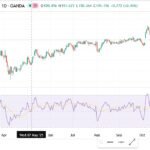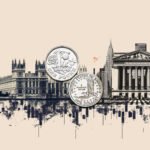What’s going on here?
The British pound has inched up against the euro and US dollar amid mixed labor market stats, sparking chatter about potential Bank of England (BoE) rate cuts.
What does this mean?
Recent figures show British pay growth hitting a two-year low while unemployment dropped to a steady 4%. This mixed labor data prompts speculation that the BoE might cut interest rates by 25 basis points in November. Governor Andrew Bailey has even hinted at more significant cuts should inflationary pressures continue to soften. A new report may soon reveal the Consumer Price Index (CPI) dropping to 1.9%, undercutting the BoE’s 2% target for the first time since 2021. Meanwhile, the pound has depreciated over 2% against the dollar this month but gained slightly against the euro, settling at 83.43 pence.
Why should I care?
For markets: Rate cut rumors alter the currency landscape.
With markets heavily expecting a BoE rate cut, futures now show an 80% probability of this move. This anticipation has already influenced currency dynamics, causing the pound to edge up against the euro but remain soft against the dollar. ING FX strategists suggest potential further weakening of the pound against the euro, hinging on future inflation reports.
The bigger picture: UK’s economic puzzle and global impacts.
As UK inflation possibly softens and labor data sends mixed signals, global watchers are gauging how these shifts influence broader monetary policy. A drop below the CPI target raises questions about future economic strategies and potential ripple effects throughout Europe and beyond. Navigating these changes will require keen attention to subsequent data releases and central bank communications.





















